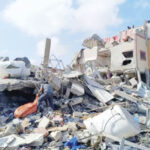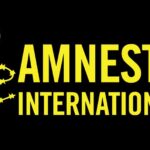Israeli forces pounded areas in the central Gaza Strip overnight, killing three people and wounding dozens of others, according to medics, while tanks deepened their invasion into Rafah in the south, residents said.
Israeli planes struck a house in Al-Nuseirat camp, killing two people and wounding 12 others, while tanks shelled areas in Al-Maghazi and Al-Bureij camps, wounding many other people, health officials said. Nuseirat, Maghazi, and Bureij are three of Gaza’s eight historic refugee camps.
In Deir al-Balah, a city packed with displaced people in the central Gaza Strip, an Israeli air strike killed one Palestinian and wounded several others on Thursday, medics said.
The Israeli military said on Wednesday forces were continuing their operations across the enclave targeting militants and military infrastructure in what it described as “precise, intelligence-based” activities.
- Nasarawa shuts down illegal mining operation
- Nigeria’s public universities on brink of collapse – ASUU
More than eight months into the war in Gaza, Israel’s advance is now focused on the two last areas its forces had yet to storm: Rafah on Gaza’s southern edge and the area surrounding Deir al-Balah in the centre.
The operations have forced more than a million people to flee since May, the vast majority already displaced from other parts of the enclave.
In Rafah, near the border with Egypt, Israeli tanks stationed deep in the western and central areas of the city stepped up bombardment, forcing more families living in the far coastal areas to flee northward. Some residents said the pace of the raid has been accelerated in the past two days.
“The tanks took control of most of the areas in Rafah. People living by the beach have also started to leave toward Khan Younis and central areas in fear because of the continued bombardment,” said Abu Wasim, a resident from Rafah’s Al-Shaboura neighbourhood, who quit his home over a week ago before tanks rolled in reaching the heart of the city.
Rafah housed over half of Gaza’s 2.3 million people until May 7 when Israeli forces began the ground offensive into the city. Fewer than 100,000 are now believed to be left behind.
There has been no sign of let-up in the fighting as efforts by international mediators, backed by the United States, have failed to persuade Israel and Hamas to agree to a ceasefire.
The armed wings of Hamas and Islamic Jihad said fighters battled Israeli forces with anti-tank rockets and mortar bombs, and have in some areas detonated pre-planted explosive devices against army units.
On Thursday, Israeli authorities freed 33 Palestinians who had been detained during the past months by Israeli forces in different areas of the enclave.
The freed detainees were admitted into Al-Aqsa Hospital in Deir Al-Balah in the central Gaza Strip after they complained of torture and mistreatment by Israeli jailers.
Israel denies mistreatment of Palestinian detainees.
Palestinian and international human rights groups have criticised what they say is Israel’s ill-treatment of Gaza detainees and repeatedly demanded it disclose their whereabouts and information about their well-being.
Israel’s ground and air campaign was triggered when Hamas-led militants stormed into southern Israel on Oct. 7, 2023 killing around 1,200 people and seizing more than 250 hostages, according to Israeli tallies.
The offensive has left Gaza in ruins, killed more than 37,400 people, according to Palestinian health authorities, and left nearly the entire population homeless and destitute.
Since a week-long truce in November, repeated attempts to arrange a ceasefire have failed, with Hamas insisting on an end to the war and full Israeli withdrawal from Gaza.
Israeli Prime Minister Benjamin Netanyahu says he will agree only to temporary pauses and will not end the war until Hamas is eradicated and the hostages are freed. (Reuters/NAN)

 Join Daily Trust WhatsApp Community For Quick Access To News and Happenings Around You.
Join Daily Trust WhatsApp Community For Quick Access To News and Happenings Around You.


